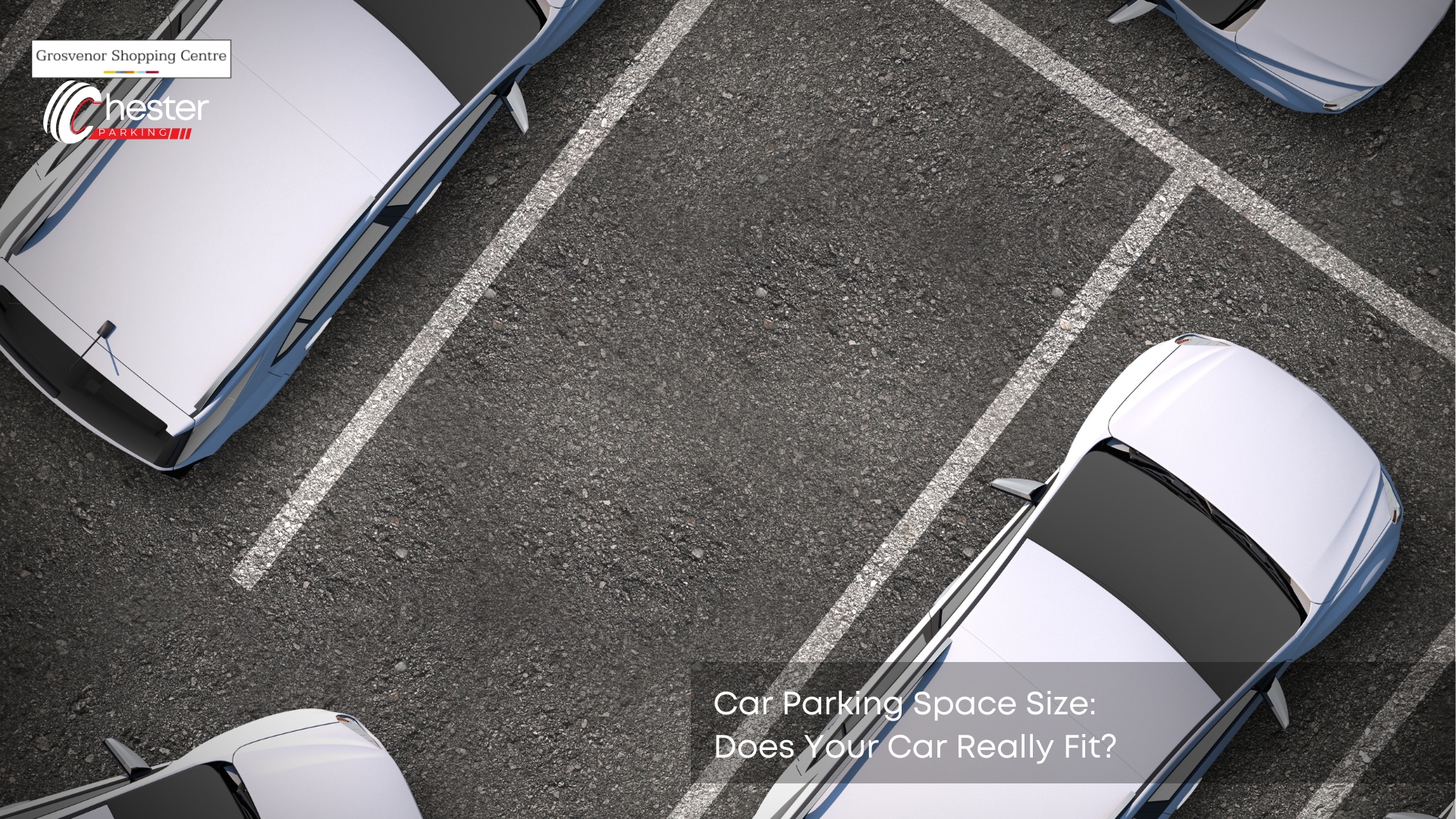Not all parking spaces are the same size, and not all cars fit them well. From compact cars to large SUVs, drivers across the UK often struggle to squeeze into tight bays. Poor markings, narrow gaps, and outdated layouts only exacerbate the issue. If you have ever found yourself reversing again and again to get straight, this guide is for you. We will explore parking space sizes, car dimensions, and how to make sure your vehicle fits comfortably and safely.
What Is the Standard Size of a Car Parking Space in the UK?
The standard size of a car parking space in the UK is about 2.4 meters wide and 4.8 meters long. These dimensions are common in council car parks, shopping centres, and residential areas. However, space markings can vary depending on the age and location of the car park. Some newer layouts allow a little more width to help with modern cars. But even with a standard size, not all cars fit comfortably.
Do All Cars Fit in a Standard Parking Space?
No, not all cars fit perfectly into standard spaces. While smaller vehicles, such as hatchbacks, usually leave room to spare, larger saloons and 4x4s can feel cramped. Cars are getting wider and longer, but many parking spaces have stayed the same. This leads to tight gaps, especially when parked between two other vehicles. It becomes even more noticeable if you drive something larger than average.
How Do Larger Vehicles Like SUVs and Vans Fit Into Normal Bays?
Larger vehicles, such as SUVs and vans, often push the limits of a standard bay. Their width and height can make door opening or reversing more difficult. In multi-story car parks, low ceilings and narrow lanes can also be a challenge. Some drivers choose end bays or wider disabled bays if permitted. The rise in larger families and electric cars makes this a growing concern in many areas.
Are Parking Spaces Different in Private Car Parks vs Public Ones?
Yes, private car parks sometimes offer wider or more modern spaces than older public ones. Supermarkets, office blocks, and apartment buildings may design bays for larger vehicles. In contrast, many council or town center spaces follow older standards. It’s common to find inconsistent sizes between locations. Knowing this helps when deciding where to park based on your vehicle’s size.
What Should You Check Before Pulling Into a Tight Spot?
Before parking, check if there’s enough space to open your doors and boot. Look for lines, curbs, or posts that could make things more difficult. Also, consider nearby cars – if they’re parked at an angle or too close, it could affect your own space. Take your time to approach slowly and adjust if needed. A quick check saves frustration and possible damage later.
Can Parking Apps Tell You About Space Size and Access?
Yes, some parking apps now include details such as bay width, entry points, and even photos. JustPark and Parkopedia occasionally display user-uploaded reviews with space-size recommendations. While not all listings offer this, it’s becoming more common. You can also find notes on surface type, ramp steepness, or ceiling height. These features are helpful if your car is long, wide, or fitted with extras like roof boxes.
What Happens If Your Vehicle Doesn’t Fit Properly?
If your vehicle does not fit well, you risk damage, fines, or blocking other drivers. Overhanging the space may attract a penalty or make reversing difficult for others. In very tight spots, you might not be able to open your doors fully. If this happens frequently, consider a different parking location. The next best step is learning how to park more safely in tight spaces.
How Can You Park More Safely in a Smaller Space?
To park safely in a smaller bay, go slowly and use mirrors carefully. Try reversing into the space when possible for better control when leaving. Choose end bays where there’s extra room on one side. Fold in your mirrors if space is tight, and avoid rushing. Taking a moment to park properly saves more time than fixing a scratched door later.
Do Multistorey or Older Car Parks Have Smaller Spaces?
Yes, many older or multistorey car parks were built when cars were smaller. This means narrow bays, low headroom, and tight turning lanes. It is common to see cars over the lines or parked unevenly in these areas. If you drive a newer, bigger vehicle, these designs can be frustrating. Some car park management teams are now updating layouts to better suit today’s vehicles.
Should You Measure Your Vehicle to Be Sure It Fits?
Yes, measuring your car helps you understand how much space you need. Check your vehicle’s length, width, and door clearance. Many cars are wider with mirrors out, so factor that in. This is useful when booking a bay online or using tight city car parks. Knowing your car’s exact size means fewer surprises and better parking decisions.
What Are the Options If You Regularly Struggle to Park?
If you often struggle to fit in, consider a few options:
- Look for wider bays or end spaces when possible.
- Use apps that show size and access details.
- Rent a private space with more room.
- Switch to parking slightly outside busy zones.
- Consider a long-stay car park with open layouts.
Making a small change in routine can make a big difference in daily stress, especially when switching to all-day parking with more space and flexibility.
How Do You Avoid Dings, Scratches, and Tight Manoeuvres?
To avoid minor damage, choose spaces with room to open your doors fully. Park straight between the lines and avoid squeezing into spots next to large vehicles. Use parking sensors or cameras if your car is equipped with them. Taking a few extra seconds when entering or exiting reduces the risk of injury. A careful approach is better than dealing with scratches or scuffed paint later.
What’s the Best Way to Choose the Right Space for Your Car?
The best way is to match your car’s size with the type of bay available. Use apps to check ahead, avoid tight old car parks, and give yourself room to manoeuvre. Try a few regular spots and stick with the ones that feel safe and easy. With the right space, parking becomes quicker, safer, and much less stressful, especially with reliable options like Parking Chester.


Leave a Reply